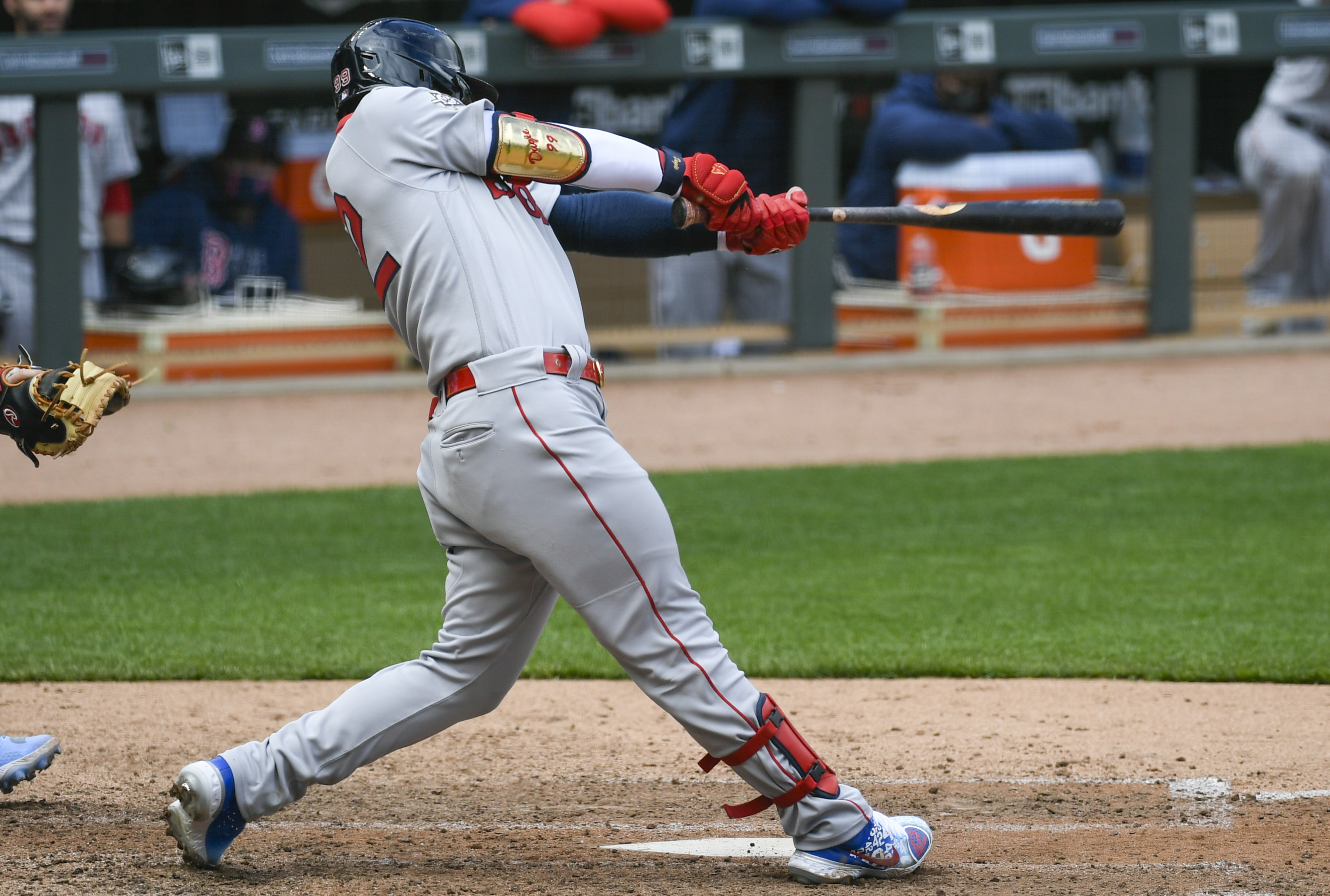
In an early season game between the Red Sox and Orioles, Boston found themselves with runners on first and third and one out, first baseman Bobby Dalbec came to the plate. With the count 2-1, he hit a potential inning-ending double play ball to Baltimore's shortstop Freddy Galvin. The ground ball was fielded cleanly, thrown to second for the first out, then flipped over to first a split-second too late to get a hustling Dalbec. The inning continued, and a run scored. In the box score, the at-bat went down simply as an RBI groundout to short. But it was far more than just any old RBI groundout.
As mentioned, that ground ball was a potential inning-ending double play ground ball. Well, the inning was the ninth. And because Dalbec beat the play, a run scored. And that run just happened to be the tying run. The game went to extra innings and the Red Sox wound up winning. They might not have ever had that chance had their slugging first baseman not put the ball in play.
A couple days later, it was Alex Verdugo's turn. With two outs in the top of the eighth inning and Boston down 3-0 to the Twins, the Sox energetic outfielder battled in the box for 10 pitches before knocking a game-tying, bases loaded double down the left field line.
"I was not going to let him beat me," said Verdugo after the game.
Then came a road trip to New York against the Mets, with the Red Sox facing the best pitcher on the planet in Jacob deGrom. During the TV broadcast, there was a three-second clip that captured what may very well have been the difference in the game. It simply showed Boston catcher Christian Vazquez choking up on the bat.
Why was that such a big deal? Because it showed a hitter making an adjustment based on what the game required of him in that particular moment. It was a scoreless game in the second inning at that point, with Vazquez up to bat with a runner on 3rd and one out. In that moment, his job was to get the run in. Period. And in order to drive that run in, that may mean placing an emphasis on contact over power.
That's exactly what it meant to Vazquez.
With the count 0-2, by choking up and shortening his swing to make sure he was able to put the ball in play and do his job, as the situation dictated, he won the AB, driving an RBI double into the right centerfield gap. That turned out to be the game's only run in a 1-0 win for the Red Sox.
The strikeout is the most unproductive out in the game, and for some reason, it has become an accepted practice in many ways in the game today. Many hitting coaches mock the idea of taking an approach to just put the ball in play, arguing that swinging for the downs and the possibility of doing damage trumps a less aggressive swing that may only yield weak contact, regardless of the situation. Some freely admit that a strikeout with intent behind the swing is better than the defensive swing aimed just to get the bat on the ball. That is a misguided approach.
What might happen when a hitter "just gets the bat on the ball?"
If the Red Sox's first couple months of the season are any indication, their focus on putting the ball in play has yielded some pretty big wins here in the early going. To the hitters in their lineup, they aren't trying to "just put the ball in play" It's far more than that; they are competing in the box to find a way to get the job done, move runners, score runs, and win games. It's not that they are giving up by wanting to put the ball in play, but rather it's the contrary. They are not giving in.
So far it's working.